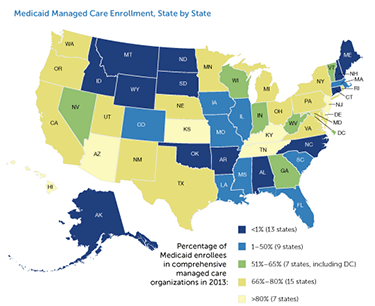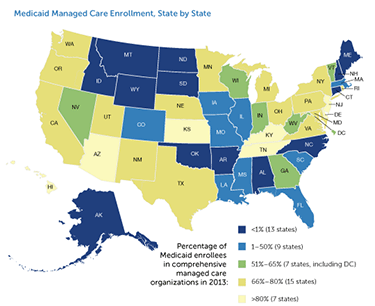Undoubtedly, the final Medicaid managed care (MMC) rule issued April 25 by the Centers for Medicare & Medicaid Services (CMS) is a landmark. A respected expert said its importance “hardly can be overstated,” as it updates federal Medicaid regulations governing nearly every aspect of managed care policy and operations for the first time since 2002.
The rule covers everything from beneficiary protections and health plan profit margins, to quality measures and mental health benefits. The National Association of Medicaid Directors said it would have “far reaching impacts.” Indeed, it will affect the way health care and long-term services and supports (LTSS) are delivered to nearly 60 million Americans now enrolled in MMC plans.
So, does the new rule represent a great leap forward for Medicaid? Or is it an overdue attempt to ensure all state MMC programs meet basic minimum standards? The answer, as my Mathematica colleagues and I know from many years evaluating Medicaid policy and programs, depends on where you sit: Minnesota or Mississippi; beneficiary or provider; advocate or health plan executive.
The key issue now is how much and how fast states with lax oversight of MMC plans will implement the new rule to improve care for their Medicaid beneficiaries.

Medicaid has always had state leaders and laggards. Despite efforts to set national eligibility standards for low-income adults, the gap in qualifying income levels for a parent with two kids is wide: from more than twice the federal poverty level in the District of Columbia to just 18 percent in Texas. Likewise, the final MMC rule tries to raise the national bar in some areas. But by recognizing that states must shape the program to fit their needs and budgets, the rule leaves the door open to state variation in program design and outcomes. Here are three examples:
- Access to providers and services. Provider network adequacy standards for health plans are designed to ensure that beneficiaries have timely access to needed services. Although most states establish provider-to-patient ratios, fewer states distinguish between types of providers and monitor compliance closely. The new MMC rule will require all states to set maximum time and distance standards for specified types of providers. States will also have to certify the adequacy of managed care plans’ networks at least annually or when adding new beneficiary groups, benefits, or service areas. But the rule does not set national quantitative standards, so beneficiaries in some states may still have far to travel to see available providers.
- Enrollee protections in managed LTSS programs. In 2002, only a handful of states operated managed care programs that covered LTSS for frail older adults and people with disabilities. In 2016, over half of the states operate such programs, and the new MMC rule extends special protections for these vulnerable enrollees. It requires all states to closely monitor the delivery of services authorized in beneficiary care plans and watch for indicators of abuse, neglect, and other critical incidents. However, based on past experience, some states likely will devote fewer resources than others in conducting such surveillance.
- Medical loss ratios for health plans. One of the most controversial areas of the new rule concerns medical loss ratios (MLRs)—the amount a health plan spends on services relative to total revenue in fixed payments per patient, known as capitation payments. Although MLRs are used in the Medicare Advantage and Exchange programs to hold health plans financially accountable, only a dozen or so states had MLRs for MMC plans as of 2014. The final MMC rule requires all states to set capitation rates assuming an MLR of at least 85 percent – meaning plans can spend no more than 15 percent of revenue on administration, marketing, and profit. However, states are not required to collect rebates if plans go below 85 percent, creating a potential loophole.
The rule contains many more examples in which the federal government tried to strike a balance between setting a national floor and allowing states to chart their own course. In the end, the extent to which the new rule ensures beneficiaries obtain needed care—and leads to better outcomes—depends on oversight: by federal officials of state Medicaid policies, by state officials of health plan performance, by health plan managers of provider service delivery, and by consumer and legal advocates watching out for beneficiaries and holding the overseers accountable up and down the chain.
Mathematica plays a key supporting role in how the rule is implemented. For the last four years, we have partnered with the Center for Medicaid and CHIP Services to modernize and strengthen the oversight of MMC programs. We created tools and resources to help federal and state Medicaid officials design and monitor MMC programs through strong contracts, sound capitation rates, comprehensive data collection, and quality measurement. To support CMS as it works with states to implement the new rule, Mathematica will develop new tools, resources, and guidance to help Medicaid officials understand and apply the best practices of leading states. Providing timely and efficient access to high quality care for all MMC beneficiaries, regardless of where they live, will take concerted effort to put the new rules into practice in all states.



